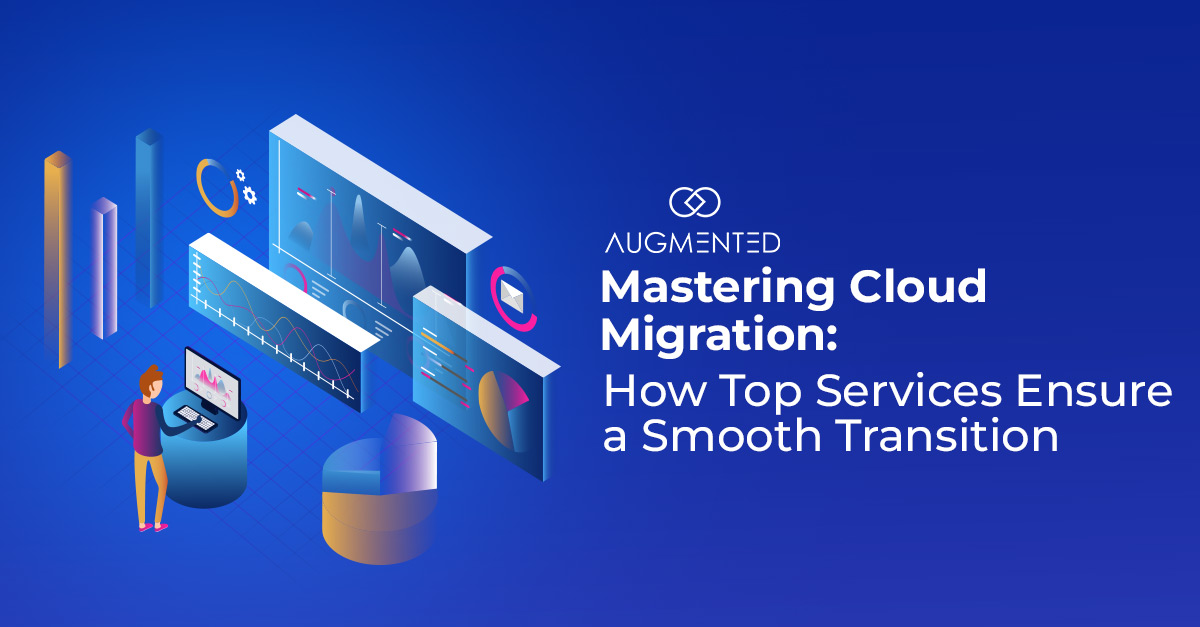Managing data and operations is a common business headache. It's a dilemma, especially with today's rapidly evolving technological landscape.
Indeed, we all feel the frustration of wanting to access vital business information from anywhere. Moreover, accessing it without worrying about data security is also a task.
So, is there a solution? Yes!
Cloud Migration is your gateway to transformation. However, it's not as simple as flicking a switch. It's a strategic move that requires careful planning and execution.
But worry not! This blog explores various cloud migration services that can help you achieve a seamless and successful migration journey.
Let’s get started!
What Is Cloud Migration and Why Transition?
Cloud migration is a process of moving applications, data, and IT processes from an on-premise infrastructure to cloud-based services.
If you are seeking to break free from outdated and less efficient systems, you must bid farewell to your aging legacy servers or unreliable firewall applications. Why? Because cloud migration can revolutionize the way your business operates.
Using cloud migration services, you can store customer orders and track inventory. Secondly, you can effortlessly scale up your business during busy hours via online platforms. You can also ensure a seamless customer experience, save money, and focus on your business instead of managing complex in-house servers.
Cloud computing is here to stay as cloud migration services offer alluring benefits, such as:
- Enhanced Efficiency and flexibility
- Reduced operational costs
- Improved Scalability
- Enhanced Security
Despite all the benefits, proper planning and execution are crucial when it comes to cloud data migration. Failing to address these important steps can lead to significant risks and complexities.
So, to ensure a smooth transition, it is imperative to take careful consideration or even consult a cloud migration service provider. Let’s see how.
7 Best Practices You Can Use For Cloud Migration
Before migrating to the cloud, proper preparation and planning are crucial. You cannot simply jump into cloud data migration. Why? Simply because it poses several data migration challenges that can catch some off guard.
So, let’s have a look at seven best practices that you can use for a smooth transition to the cloud.
1. Assessment and Planning
Before you start your migration journey, the most important step is to understand your business. A smooth transition starts with knowing how much data storage space your business needs.
Here’s how you can do that:
- Evaluate your current It infrastructure, apps, and data.
- Identify potential roadblocks that may hinder your transition.
- Find out the amount of data stored across all your computers and drives.
- Sit back to decide if your data storage needs will increase, decrease, or stay the same shortly.
Once your assessment is complete, move to the planning phase. Here, you need to identify and define your migration goals. Secondly, planning on which cloud migration solutions suit your needs.
2. Data Migration
Data migration is a crucial step when transferring data to the cloud. It ensures that your data is securely and accurately transferred. To maintain data integrity and data security during the transition, follow these steps:
- To prevent data loss, ensure to back up your data.
- Analyze and categorize your data based on data sensitivity, importance, and regulatory compliances.
- Use data migration services or consult cloud migration service providers.
- Make a plan that outlines the steps, timelines, and responsibilities for each data migration.
3. Security and Compliance
First and foremost is securing your data when transitioning to the cloud. Your company could be at risk without data security.
How can you do that?
- Leverage the built-in security features on your cloud data migration.
- If you plan on going with a data migration service provider, learn how they will keep your network, data, and cloud connection secure.
- Reliable IT support during and after the transition is crucial for a smooth and successful migration.
- Ensure you have the necessary support to handle any potential challenges.
- You can also secure your infrastructure using cloud provider tools, such as VPNs, firewalls, and intrusion detective systems.
- Do not forget to ask your cloud provider to give you the necessary compliance certificates.
4. Migration Strategies
This is a step where the actual migration takes place. It involves the actual transfer of data and applications. You can choose from a range of techniques for your data migration.
- The lift-and-shift approach - Directly moving from on-premise servers to the cloud infrastructure without modifications.
- Re-platforming (Lift, Tinker, and Shift) - Slight application or data modifications before transitioning to the cloud.
- Refactoring/ Rearchitechting - Completely re-designing the on-premise data or application.
- Repurchasing (SaaS Adoption) - Repurchasing cloud-based software, where existing applications can be replaced with Software as a Service (Saas).
- Retiring - The option to identify and remove legacy applications which is no longer required.
- Retaining - Retaining certain on-premise applications.
Based on the nature of your applications and the requirements of your business, you can choose from any of these techniques for your data migration services.
5. Adoption and Optimization
Congratulations on successfully transferring your workload to the cloud! Now, it's time to take the next step toward maximizing its potential.
How can you do that? Simple by optimizing and adopting the cloud system.
- Adoption refers to adopting the new system. Provide training to your team about the new cloud-based tools and processes. You can offer training materials and sessions to educate the users.
- Optimization involves the persistent monitoring and improvement of resources to control costs effectively. It also refers to using cost savings tools provided by Augmented Systems which is a cloud migration service provider.
6. Testing and Validation
Testing and validating procedures are crucial to ensure a smooth and successful migration process. Do not take any chances with your valuable data; take all the necessary steps to ensure a thriving transition.
- Additionally, religiously test your migrated data's functionality, performance, and security.
- Address any issues by engaging end-users to provide feedback or performance concerns.
- Regularly review and update your testing and validation processes with the evolving business needs.
7. Documentation
Establishing strong governance and management practices. It is important to maintain control and visibility over your cloud environment.
Moreover, document the entire migration process, including configurations, settings, and customizations made.
Do not leave anything to chance - document everything and create a comprehensive record of your migration process.
Top 7 Cloud Migration Tools 2023
As more organizations and businesses transition to the cloud, the need for robust cloud migration services and tools has never been more prominent. But, with countless providers to look over, it can be hard to decide where to begin.
Here is a list of the top 7 Cloud Migration tools for 2023 to help you make the right decision.
- AvePoint - AvePoint provides cloud migration services from on-premises or cloud-hosted environments to SharePoint or Microsoft 365.
- Azure - Azure is a cloud computing platform by Microsoft that offers access, management and development of applications through Glodab data centers.
- AppDynamics - This ensures the health and security of your applications. It rapidly recognizes issues so that they can be addressed immediately.
- Google Cloud - It offers services and solutions to help migrate your information and applications to the cloud data sets.
- Turbonomic - It monitors and streamlines responsibilities by offering a hybrid cloud automation platform.
- Carbonite Migrate - It offers cloud migration services and solutions for professional use, enterprise, and home.
- AWS Migration Tools - Amazon Web Services offers dependable migration services that migrate information without changing the source and objective.
Conclusion
In this digital era, businesses can unlock the cloud's unprecedented opportunities and achieve sustained success.
Companies can gain a competitive edge and drive growth like never before by leveraging the cloud's full potential.
However, cloud migrations are not just about confining to the latest trends but aligning digital transformations with your business requirements. So, if you have any questions, you can always contact us.





